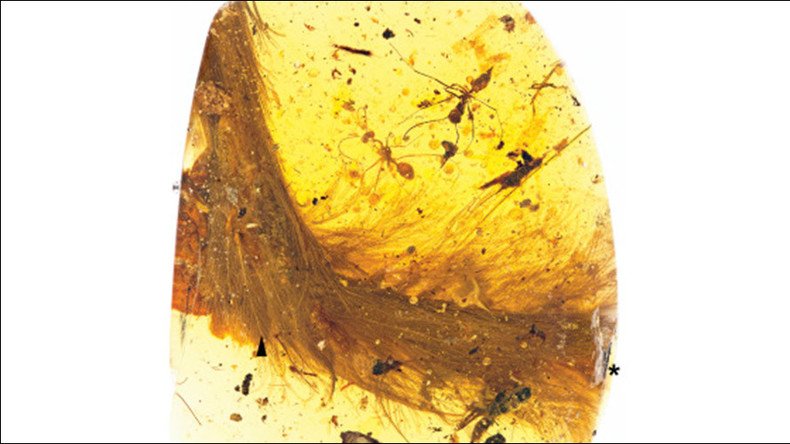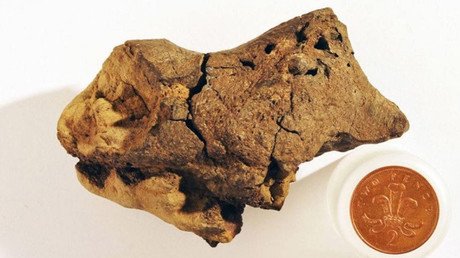‘1st of its kind’: 99 million-year-old feathered dinosaur tail discovered in Myanmar

The tail of a 99-million-year-old dinosaur has been discovered in Myanmar, complete with feathers, bones, and soft tissue, according to a new report. The finding is the very first of its kind, much to the delight of scientists across the globe.
The remarkable discovery has roots in 2015, when Lida Xing, a researcher from the China University of Geosciences, was wandering through an amber market in Myanmar, when he came across something that caught his eye.
For sale at a stall was a piece of amber that had been dug out of a mine. Inside, he could see some ancient ants, and a fuzzy brown tuft. While the salesman believed the brown object to be some sort of plant, Xing suspected it was much more significant than that – part of a feathered dinosaur.
He persuaded the Dexu Institute of Palaeontology to buy the artifact, and began studying it alongside colleagues from China, the UK, and Canada. They soon discovered that Xing was right – the object preserved in amber indeed belonged to a dinosaur.
“I have studied paleontology for more than 10 years and have been interested in dinosaurs for more than 30 years. But I never expected we could find a dinosaur in amber. This may be the coolest find in my life,” Xing told NPR. “The feathers on the tail are so dense and regular, this is really wonderful.”
Xing's colleague Ryan McKellar, a palaeontologist at the Royal Saskatchewan Museum in Canada who was involved in the study, said he’s “blown away” by the finding, which is the “first of its kind,” Reuters reported.
Their excitement is understandable. After all, it’s the first time that feathers together with skeletal material from a dinosaur have been found in amber.
“Previous finds in amber have included isolated feathers that may have belonged to dinosaurs, but without an identifiable part of the body included, their source has remained open to debate,” Xing told the Canadian Broadcasting Corporation (CBC).
McKellar also told NPR that the finding is a “spectacular little glimpse,” as it gives scientists a “pathway that gets us to modern feathers” – a particularly useful finding, since the theories on how feathers evolved has long since been the topic of debate.
The fact that traces of iron from blood hemoglobin is present in the specimen also provides hope for future analysis which might provide scientists with “other chemical information on things like pigmentation or even to identify parts of the original keratin,” McKellar told National Geographic.
Xing and his colleagues say that the tail belonged to a young coelurosaur who they have nicknamed ‘Eva.’ They believe its feathery tail became stuck in tree resin around 99 million years ago, when it was about the size of a sparrow. It never made it out, and its tail eventually became well preserved in amber.
Had the coelurosaur – a dinosaur species closely related to the tyrannosaurus rex and velociraptor – been lucky enough to reach adulthood, it would have grown to be slightly smaller than an ostrich.
And, according to McKellar, it would have probably been “fairly cute and fuzzy.”
The tail and its accompanied amber was dug out from a mine in northern Myanmar's Hukawng Valley, located in Kachin state. Amber from the region is believed to contain the world’s largest variety of animal and plant life from the Cretaceous period.
Xing believes his market stall discovery is the first of many to come, due to the conflict between government forces and local armed forces nearing an end in Myanmar.
“Soon, there will be a lot of specimens excavated," he said, adding that his ultimate ambition would be to find a complete dinosaur.
The study by Xing and his colleagues was published in the journal Current Biology on Thursday.














